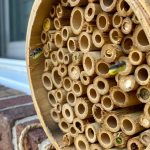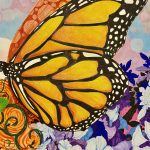Artists in the Garden: Lynne Frailing
We caught up with Lynne Frailing to chat about the fascinating world of Botanical Art, the teachers that inspire her, and her fellow artists Juliet Kirby and Lesley McCowen. Lynne is a vision in soft fabrics and colors. Her piercing blue eyes are exacting. We sit outside Baker Hall Visitor center on a shady bench. Lynne is a fount of knowledge with a breezy, friendly demeanor. She tells me she grew up in Norfolk with a mother and father who enjoyed getting their hands in home vegetable and flower gardens. The artist shares that she enjoyed many trips to NBG as a child and has fond precious memories of the garden then known as Norfolk Azalea Garden. NBG is a family tradition that she is handing down to her own children. Be sure to check out her show with fellow botanical artists Juliet Kirby and Lesley MCowen in Baker Hall Visitor Center, on view through the end of July!
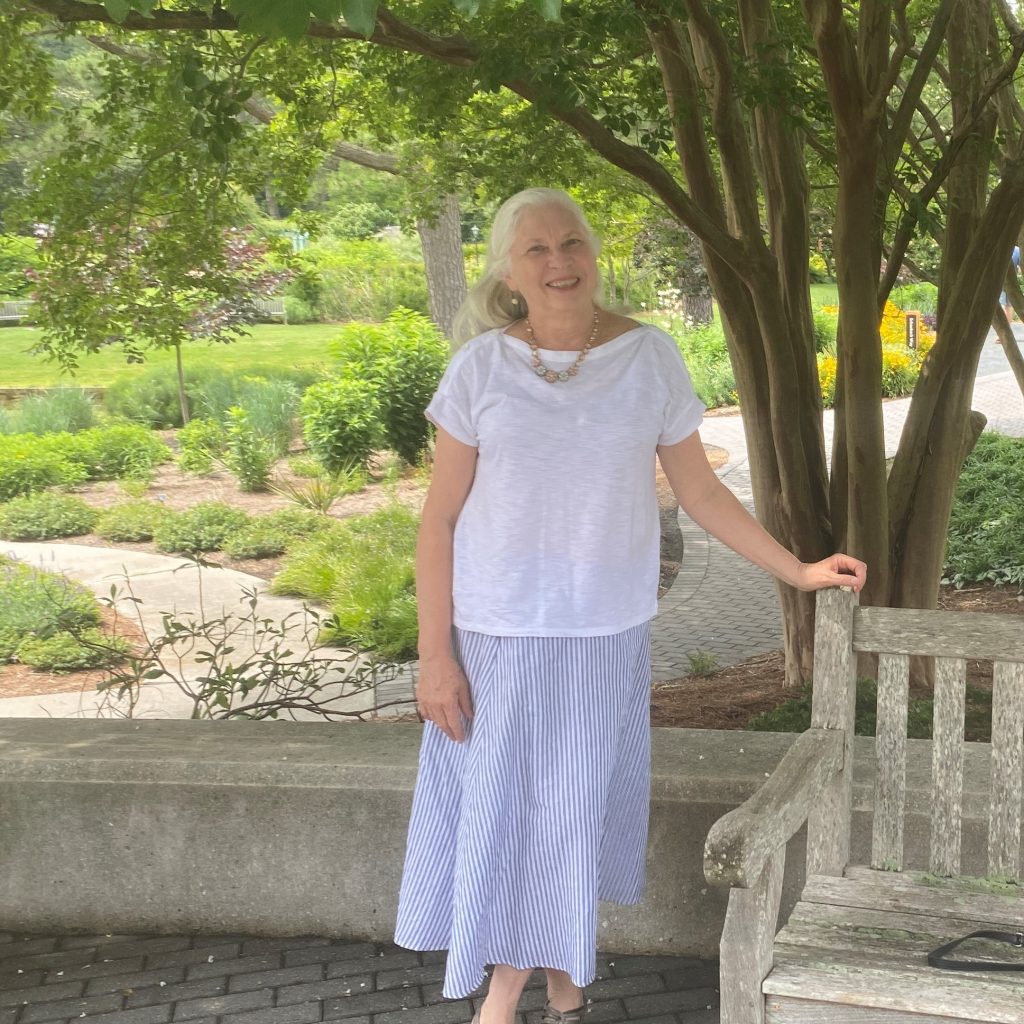
Why plants?
Lynne: I’ve always enjoyed plants. I have always been, actually, very interested
in dirt, which may sound funny, I just like thinking about what can grow in what
will grow well in the various micro-climates in my garden. So I’ve had a personal
interest in it for a long, long time. I mean, even when I lived in apartments I
actually planted plants in every apartment, usually Sunflowers, even if I was just
there for 6 months because I was a traveling art teacher at one time. So plants are
beautiful, they change it’s an area of science that is worthy of exploration by
everyone. . It is clear there needs to be more education into what is important in
so far as our environment. I have a persistent interest in painting portraits but to
date, my own garden has been a worthy subject. The plants I choose change form
season to season. One year may bring a beautiful bloom to my magnolia and the
other a crisp colorful dogwood leaf. But, I may get back to portrait painting as I
know have a larger family to paint including grandchildren.
Most of my specimens are from my yard and with these paintings, I am creating a record of my life.
Each painting contains a story. The colors are a story, time of day, the insects that are present around the plant, all of this is part of what I remember and think of when I am painting. When I look at a painting I have completed. . .There is a sunflower painting in my NBG show that I have a strong memory of going into my front yard. . .the bees around the towering stalks, the waving of the soon to be falling leaves by their side. . .the sun so bright and the yellows vibrant. I seek to capture these moments of the plant still alive in the ground, although my work is done with the specimens in front of me at a worktable. Which brings up the effort needed to keep my specimens alive as long as possible. All my drawings are done in pencil and often pen.
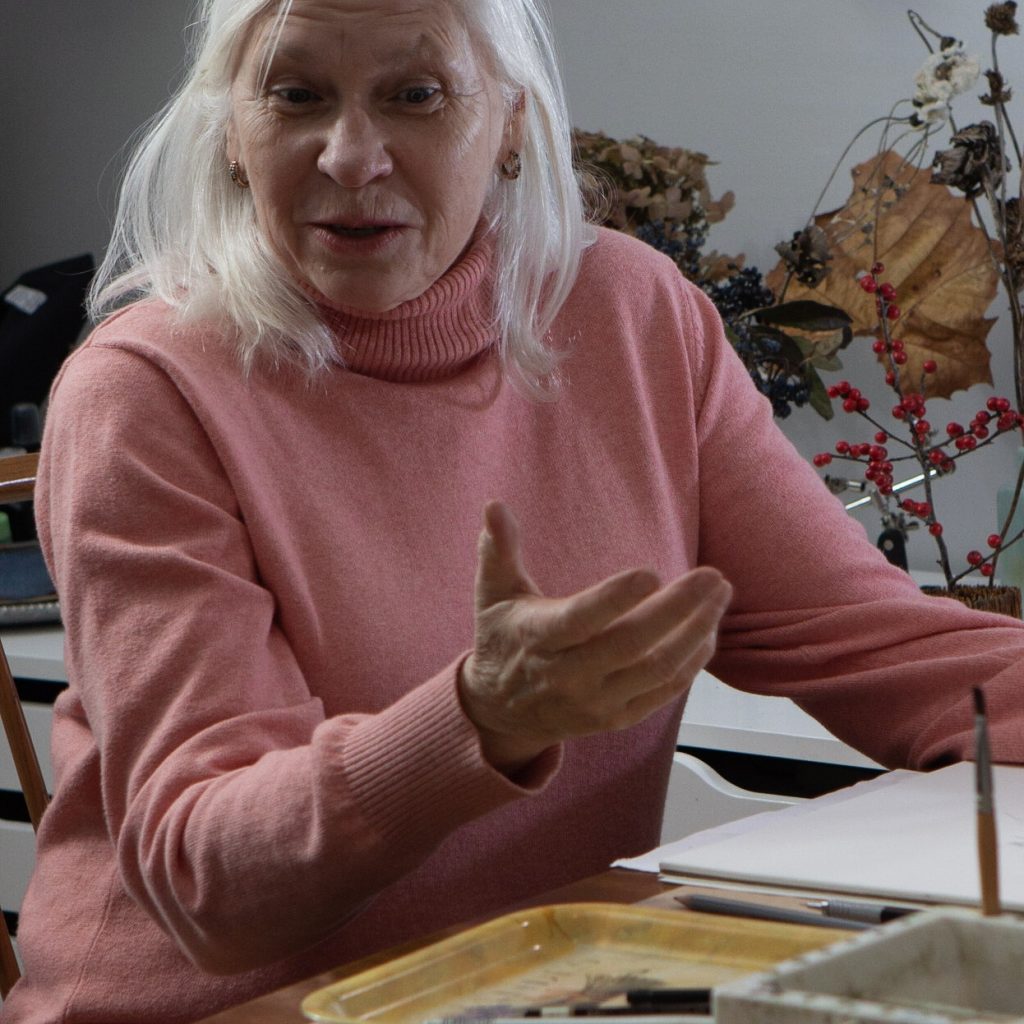
I only use photos for references after the specimen has wilted. I do have gardening friends and a brother and his wife that share their blooms and leaves with me, this brings me great joy to share a garden walk and talk at NBG every season with other garden lovers. Juliet Kirby, who is my teacher, did affect me very positively. She did what I think an art teacher should do. She is the kind of art teacher who quickly sees what you see or are interested in. She allowed me and encouraged me to develop my own style. And she was able to meet me as an artist and help me grow in this field. She has a thorough knowledge of the traditions of Botanical art and shared with all her students prudently and with a flare of creativity. I am honored to have Juliet Kirby and Leslie McCowen in my current NBG art show at Baker Hall. Lesley was also a great inspiration to me. She has a perfect visual memory and paints quickly with grace in her compositions and a wonderful facility with color selection. There are many fine botanical illustrators working today across the world. Juliet, Lizzie and I are all members of the American Society of Botanical Art (ASBA). This is an international society, which seeks to promote and educate others in this wonderful art form. Each of us three has been featured in our ASBA quarterly journal over the past 2 years and those articles are available to view along with our show.
Process
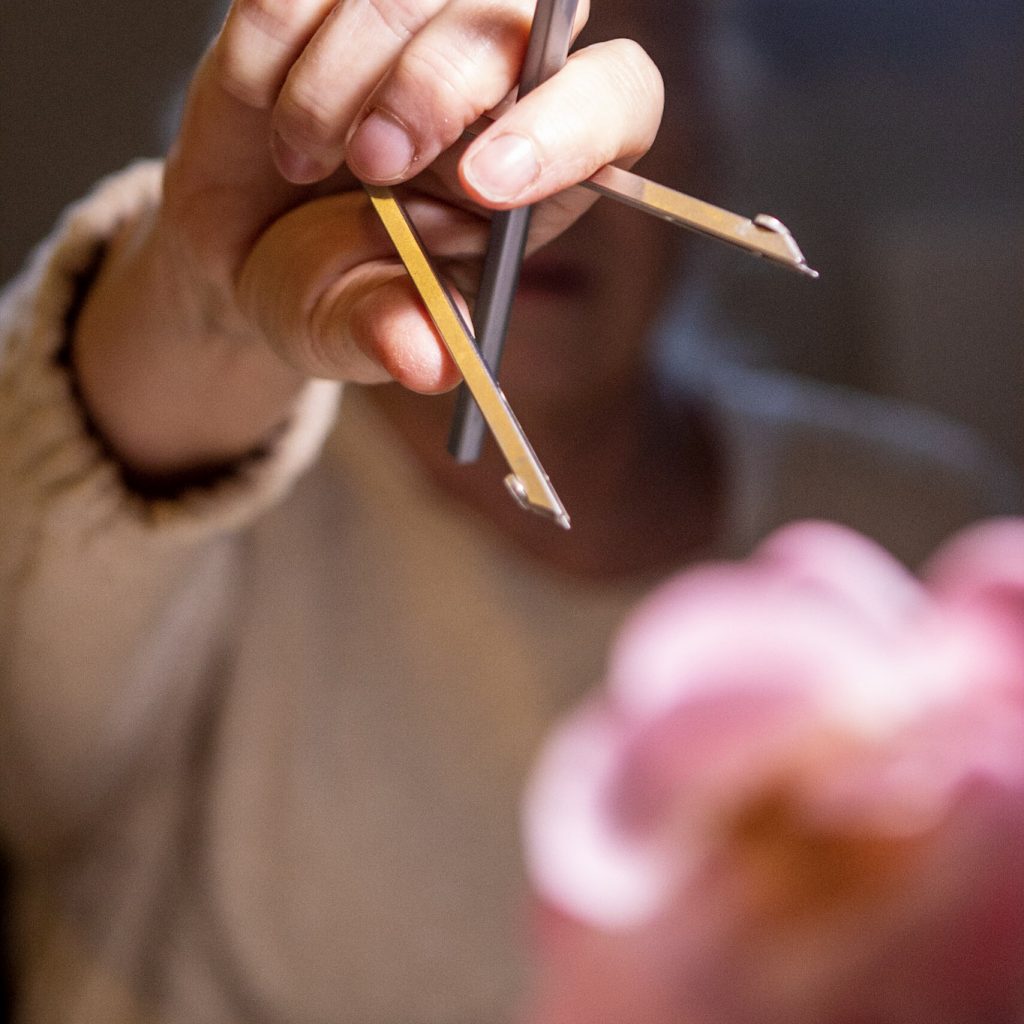
My process is traditional and involves doing my best to describe a plant with pencil, pen or watercolor. I strive to do this with an interesting composition and with a sense of three-dimensionality. Botanical illustration dates back to the earliest know works of art on caves and onward. As technology has changed so have artists and their tools and techniques but the goals are the same. Create a picture, nonphotographic, that helps a viewer know and possibly identify the plant. From start to finish a large painting can take me about 60 hours. I select plants that interest me. Some specimens are more of a challenge than others. Magnolia and Camellia are some of my favorite subjects.
Teaching as an Art Form
When teaching botanical art I like to present an atmosphere that gives people a chance to have fun with their own success.
This encourages a student to move forward and to relax as they stare at their specimen. I have taught in other settings before working at NBG with adults and art is a subject I enjoy sharing. I love botanical art. I like to share this passion with my students. It is great to be in a room full of people learning with me. Their excitement is inspiring as they see what they can learn in a short time. I also learn form my student’s questions and success.
We want people to take that passion and look harder at their own environment.
-Lynne Frailing
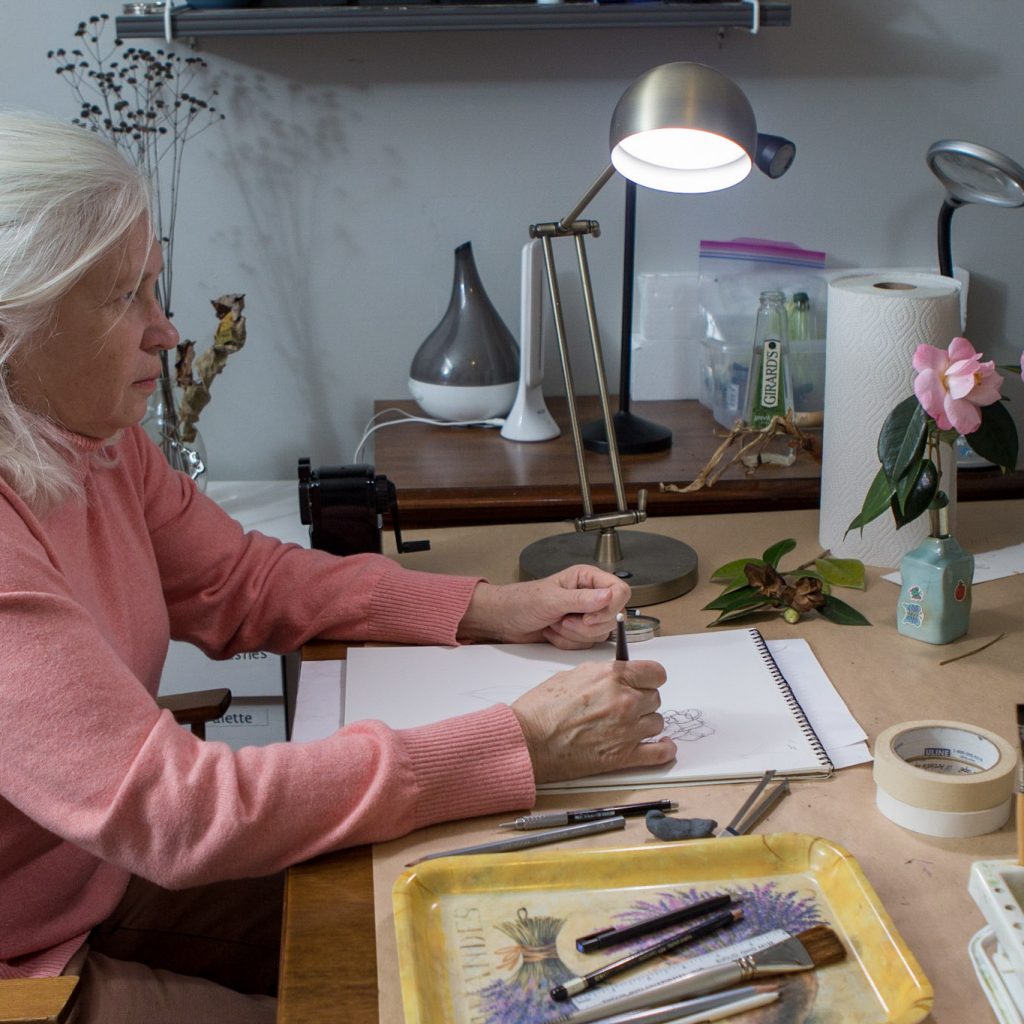
I wanted the people that came here to have an idea of what botanical art can be. This is why it was important to have three artists here with our different styles. The work displayed here at NBG, of Lesley McCowen’s, is just one of her many botanical projects. It was bold of her to work to couple literature, Shakespeare’s works, with her investigation of the plants mentioned within his plays. Here you see art and literature combined. Juliet is a master of her watercolor technique and at truly passionate gardener. She has great knowledge skill and heart in all her work. Lesley, Juliet and myself all enjoy sharing our interest and skill in this field with others and hope this will encourage all who view our work to look harder at each plant that calls their attention. I’m a bit of a botanical missionary, we all three are.
For more on Lynne Frailing check out this gorgeous video from Plant Pop to see the artist in action! For those interested in the history of botanical art be sure to check out The American Society of Botanical Artists which is a fascinating resource for “the history of art and the sciences of botany, horticulture, medicine, and agriculture.”
Thank you to the fabulous Lynne Frailing for taking the time to chat with us! You can see her work and the work of her dear friends Juliet Kirby and Lesley McCowen in Baker Hall through the end of July. They are stunning botanical pieces with unique perspectives. Fans of Shakespeare will be sure to enjoy McCowen’s work in particular. Take a moment to stop and examine them the next time you’re here, and perhaps begin to look at your own environment through the careful eyes of an artist.
If you’re interested in Botanical Science and Art keep an eye out for the return of Lynne’s Botanical Illustration class this Fall at NBG!



